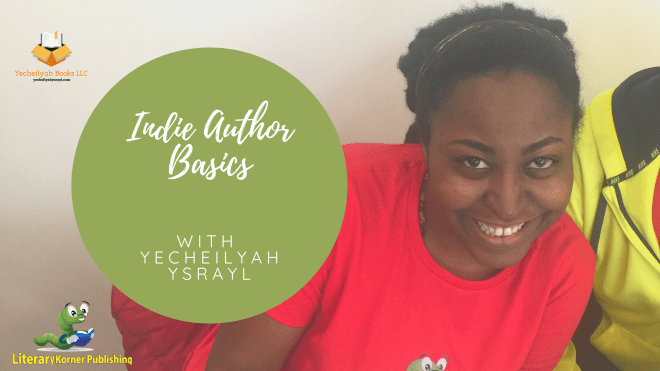
I have had this post sitting in my drafts since October 2019. I didn’t want to publish it until I had tightened up my own business structure and then Corona hit and I thought, “Maybe this isn’t appropriate right now” and I put it off. I have a habit of meditating on what I have to do throughout the day before I get up from the bed. This morning I thought, “Wait a minute, this could actually be the perfect time to present this information.”
Even though there aren’t many people working and the world is sick, this could be the perfect time for us to plan, organize, and restructure some things. The other day we cleaned out a closet that had served as the junk closet since we moved in, and Moshe (Husband) organized the garage. These days, we are paying attention to things we have neglected to give much attention to. Why not include our writing business too? Whether you will use this information now or later, this is an excellent time to give it some thought.
In the Beginning
For Self-Publishing a book, things are relatively easy in the beginning. You create a KDP account, connect your bank account (so you can get paid your royalties) and you are set. You can also create a PayPal account to collect funds from books bought through your website or blog and get a card reader to accept payments on the go, such as at book signings.
UPDATE: Card readers are becoming more outdated as apps like Cash App and Zelle become increasingly popular. I highly recommend authors to have a Cash App for book signings and festivals.
Next Level
Depending on your financial situation, it may be necessary to level up if you’ve been at this awhile.
How do you level up from this basic structure? How do you go from author to authorpreneur?
Author + Entrepreneurial Practices = Authorpreneur
An authorpreneur is an author with entrepreneurial practices.
If publishing a book is like opening a business, you can do things to make sure you are running it like one.
It’s not 2008 and Self-Publishing is not what it used to be. The standards are higher.
Anyone can publish a book today (even if they aren’t good writers), by uploading a Word Document or PDF to Amazon’s Kindle Direct Publishing. In the past, this has brought down the quality of the prestigious process of book publishing and, specifically, Indie Book Publishing. Today, though, the stigma attached to Self-Publishing is fading, and authors who publish top-quality material are being separated from those who do not.
With the current Pandemic ravaging the world, realizing the value of Indie Publishing, social media, and doing business online is apparent now more than ever. A lot of brick and mortar bookstores are closed, and some will not reopen.
The basic system I started this post out as is good initially, but the Indie Author who goes beyond the bare minimum will set themselves apart from the pack.
Create a business name/structure that is legal and connected to a business bank account.
When your business grows, you will discover how important it is to have a legal business structure. It has done wonders for me and helps me keep up with how much is coming in and going out, which helps me have a realistic picture of my ROI or return on investment. You work hard to write these books, publish them and spend good money to get them out into the world. Don’t let all this hard work go to waste.
You can get away with using a Pseudonym or creative business name at first, but if you are serious about using that name for specific projects, you will need it to be legit. What happens if someone sends you a check in your fake business name and you have not made it legal? Without a business bank account in that name, you will not be able to cash it.
-
- Decide if you want to be a Sole Proprietorship, LLC, Corporation, Non-Profit (if you publish books for charity) or any other structure that suits you.
* Most people do not recommend a Sole Proprietorship, but it will work just fine. I am all about keeping things simple.
- Set up a business bank account – You can set up your bank account once you have your business structure in place and monitor just how much is coming in from your book sales and other author endeavors separate from other forms of income. You will get a business debit/bank card and checks to use for your business. You can even establish a line of credit.
- Creating a business structure can motivate you because you get to see your writing as a real business and not just a fancy play-name. You can get logos made if you want and do transactions under this name which comes in handy when completing W-9 forms and other paperwork that may be required for you to get paid.
Stay Legally Compliant
- With a business structure, you will need to keep your business compliant with state and federal business laws. The requirements will vary based on your business structure. (For instance, the conditions are more strict for corporations than LLC’s). An example is that you may have to file once a year with a filing fee of maybe $30 to stay in compliance. The process is not tedious, and you may even be able to do it online. For details on staying compliant, you can visit the small business administration website here.
If you don’t stay compliant your business will fall into an inactive status.
Publish Your Books Under Your Own Imprint
Once you have your legal business structure and business bank account in place, it is time to publish your books like you own your business.

- Buy Your ISBNs – The ISBN is a unique identifier for a book issued by an ISBN registration agency. In the US, this agency is Bowker.* In some other countries, the ISBN is free, but in the US they are not. They are expensive, so it’s best to buy them in bulk if you can. You can buy a block of ten which would cover ten separate paperback or hardcopy books. KDP, Lulu, and other POD (Print on Demand) companies do provide ISBNs for free if you absolutely cannot afford to buy one
But…
Free assigned ISBNs belong to the company that issues it, such as KDP or Lulu. This means they (KDP/Lulu/Other said company) are listed as the publishers of that book, not you.
*There are tons of fake ISBN companies out there. If you are in the US, be sure you purchase your ISBN from Bowker.
Once you have your own company, you will want to have your books listed under your company name. If you are the publisher, you should be listed as the publisher. If ownership is important to you, buying your own ISBNs is something you might want to look into.
With your company name legalized, your business structure secure, your EIN in hand, your bank account set up, and books under your ISBN, you have positioned yourself as a serious business person. It is now easier than ever for high-profile people to do business with you.
It’s easy to go the free route, but free is limiting, and it does not always set you apart. Creating an actual business complete with the necessary paperwork makes it easier for you to stay organized, file taxes, rise above the crowd, and stand out as a professional author.
Extra Tips
- Your work is under copyright protection the moment it is created. Don’t let scam publishing companies fool you by saying “Keep 100% of Your Copyright.” This means they are promising you something you already have. For publishing rights (different from copyright) all you have to do is buy your own ISBN. If you want to go the extra mile and register a copyright with the copyright office you can do that inexpensively at copyright.gov.
- When tightening up your writing business, be sure you have both a paperback and a digital version of your book available.
I talk a lot about paperbacks because a). I have personally done better with paperbacks and b). authors can sell paperbacks through their own author website along with cool author swag and things instead of relying only on Amazon. However, that doesn’t negate the importance of having digital versions of your book available too. We are living in a digital age, and with everything being online, authors without digital books will be left out. Brick and Mortar bookstores without an online presence are struggling right now.
For those who sell paperbacks, consider lowering your print book price if you do not see sales. I love buying paperbacks from Indies, but a lot of them are also costly. I am not saying you can’t raise your price (I have a separate post about that here), that there aren’t people who will buy at that price, or that your book isn’t quality enough to sell that price.
I am only saying to be realistic.
Who is buying a $30 (plus s&h) 100-page paperback from an unknown first-time Self-Published Author?
Do what works for you, but make sure you are being practical.

When I first drafted this post, I watched a video of Tyler Perry advising entrepreneurs. I am not a big Perry fan, but when people are advising about business, I listen. Perry talked about entrepreneurs learning when to let go. Here, he meant letting go of business practices that no longer serve you once your business grows. He spoke of not being so used to how it has always been done that we are not open to change. For example, Perry’s sister used to keep receipts in a folder, but as Tyler’s business grew, that kind of accounting system no longer worked for taxes. Not when you have over 400 employees.
As professional Indie Authors, we must have the same mindset. This may not be ideal for everyone, but if you fit one of these categories a legal business name and account may be worth it:
- You’ve been publishing awhile and you are making a significant income from your books and services.
- You want to separate your personal funds (finances from your day job or other income) from your book business.











 Since I mentioned breaks, I figured I should go ahead and list this one for the last bullet point. When you work for yourself you must schedule your own breaks. This sounds simple, but it’s not. Entrepreneurs are largely made up of what people call workaholics. The truth is not everyone is a workaholic, it’s just that when you make your own money you’re constantly working (as I’ve just mentioned) because nothing is guaranteed and every cent is earned. Therefore, business owners must create schedules to ensure they don’t lose their minds. We must create our own days off and vacations (mine is coming up, whoo hoo!) When we return, we’re reminded of why working for yourself is so much more mentally challenging. Everything we put off has piled up and so the grind continues but….
Since I mentioned breaks, I figured I should go ahead and list this one for the last bullet point. When you work for yourself you must schedule your own breaks. This sounds simple, but it’s not. Entrepreneurs are largely made up of what people call workaholics. The truth is not everyone is a workaholic, it’s just that when you make your own money you’re constantly working (as I’ve just mentioned) because nothing is guaranteed and every cent is earned. Therefore, business owners must create schedules to ensure they don’t lose their minds. We must create our own days off and vacations (mine is coming up, whoo hoo!) When we return, we’re reminded of why working for yourself is so much more mentally challenging. Everything we put off has piled up and so the grind continues but….